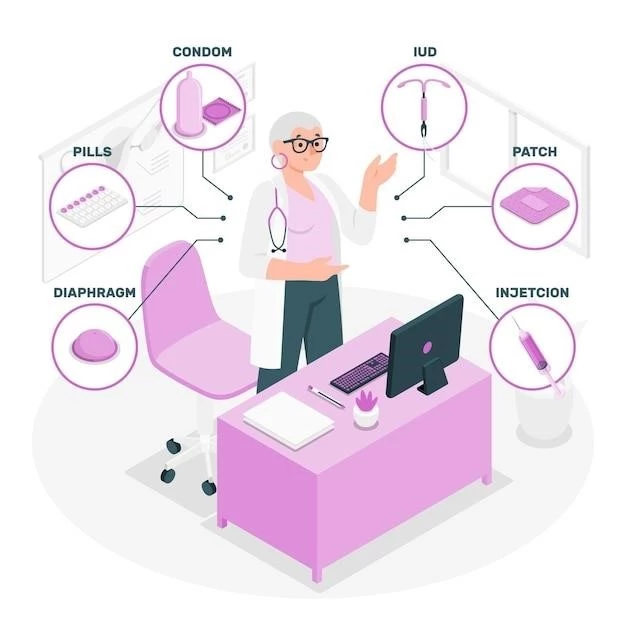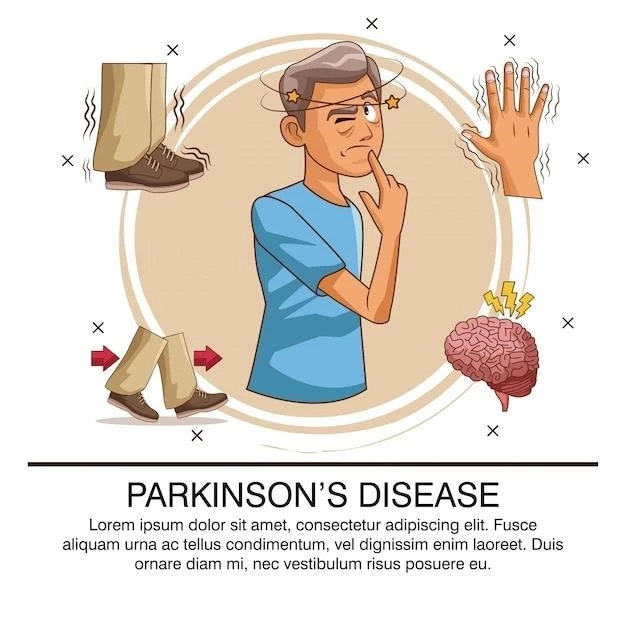Article Plan⁚ Disease ─ Usher Syndrome, Type 3
Introduction to Usher Syndrome
Usher syndrome is the most common hereditary form of deaf-blindness, affecting individuals’ sight, hearing, and balance․ With a global prevalence of 4 to 17 cases per 100٫000 individuals٫ it is a major cause of combined deafness and blindness․ There are three types of Usher syndrome٫ with Type 3 being the rarest٫ characterized by progressive hearing loss٫ retinitis pigmentosa٫ and variable vestibular dysfunction․ This genetic disorder impacts individuals’ quality of life by affecting their sensory abilities․ Learn more about the causes٫ symptoms٫ and management of Usher syndrome Type 3․
Understanding Usher Syndrome, Type 3
Usher Syndrome Type 3 is a rare genetic disorder that leads to progressive hearing loss, vision loss, and balance issues․ Individuals with this type typically have normal hearing at birth, with hearing loss developing in the teenage years․ The onset of retinitis pigmentosa, a degenerative eye disease, usually occurs between the ages of 20 to 40․ The genetic mutations in CLRN1 and HARS1 genes are known to cause Type 3 Usher Syndrome․ The condition varies in severity and progression among affected individuals, impacting their sensory functions differently․
Causes of Usher Syndrome, Type 3
Usher Syndrome Type 3 is primarily caused by mutations in the CLRN1 (USH3A) and HARS1 (USH3B) genes, leading to the progressive sensory impairments associated with the condition․ These genetic mutations are inherited in families in an autosomal recessive pattern․ Individuals with Type 3 Usher Syndrome usually receive one mutated gene from each parent, resulting in the manifestation of symptoms such as progressive hearing loss, retinitis pigmentosa, and variable vestibular dysfunction․ While rare in most populations, Usher Syndrome Type 3 is more prevalent in specific ethnic groups like the Finnish and Ashkenazi Jewish populations․
Genetic Mutations and Usher Syndrome, Type 3
Usher Syndrome Type 3 is primarily caused by genetic mutations in the CLRN1 (USH3A) and HARS1 (USH3B) genes․ These mutations lead to the progressive sensory impairments characteristic of Type 3 Usher Syndrome․ In individuals affected by Type 3, these mutations often result from inherited autosomal recessive patterns, where both parents pass down a mutated gene․ The CLRN1 and HARS1 genes play a crucial role in the development of this rare genetic disorder, impacting the individuals’ sensory functions as the condition progresses․
Prevalence of Usher Syndrome, Type 3
Usher Syndrome Type 3 is a rare form of Usher Syndrome, accounting for approximately 2-4% of all cases․ This specific type of Usher Syndrome is particularly prevalent in certain populations, such as Finland and among Ashkenazi Jewish individuals․ While the overall prevalence of Usher Syndrome is estimated at 1 in 30,000, Type 3 is less common but notable due to its impact on hearing, vision, and balance․ Understanding the prevalence of Usher Syndrome Type 3 is crucial for addressing the needs of affected individuals and providing appropriate support and resources․

Symptoms and Clinical Presentation of Usher Syndrome, Type 3
Usher Syndrome Type 3 manifests with postlingual, progressive hearing loss, variable vestibular dysfunction, and the onset of retinitis pigmentosa symptoms․ Individuals with Type 3 typically experience a gradual decline in hearing abilities, leading to the need for hearing aids by mid-to-late adulthood․ The onset of retinitis pigmentosa, characterized by night blindness, tunnel vision, and central visual acuity loss, usually occurs between the second and fourth decades of life․ Understanding the clinical presentation of Usher Syndrome Type 3 is crucial for early detection and management of the condition․
Diagnosis and Testing for Usher Syndrome, Type 3
Diagnosing Usher Syndrome Type 3 typically involves a combination of hearing tests, vision assessments, and genetic testing․ Audiologists may conduct hearing evaluations to monitor the progression of hearing loss, while ophthalmologists perform eye exams to detect retinitis pigmentosa․ Genetic tests can identify mutations in the CLRN1 and HARS1 genes associated with Type 3․ Early diagnosis is essential for individuals with suspected Usher Syndrome Type 3 to initiate appropriate management strategies․
Treatment and Management of Usher Syndrome, Type 3
The management of Usher Syndrome Type 3 focuses on addressing the progressive hearing loss٫ vision impairment٫ and balance issues that individuals experience․ Treatment options include hearing aids to assist with hearing loss٫ regular monitoring and support for retinitis pigmentosa-related vision problems٫ and vestibular rehabilitation to manage balance issues․ Genetic counseling can help families understand the hereditary nature of Usher Syndrome Type 3 and make informed decisions․ Research into potential gene therapies and treatments is ongoing to improve outcomes for individuals affected by this rare genetic disorder․
Impact on Hearing, Vision, and Balance in Usher Syndrome, Type 3
Individuals with Usher Syndrome Type 3 experience a significant impact on their hearing٫ vision٫ and balance․ The condition typically presents with postlingual٫ progressive hearing loss٫ variable vestibular dysfunction٫ and the onset of retinitis pigmentosa symptoms․ Hearing loss progresses over time٫ leading to the potential need for hearing aids by mid-to-late adulthood․ Vision problems٫ such as night blindness and tunnel vision٫ emerge in the second to fourth decades of life․ These sensory impairments can profoundly affect individuals’ daily life and independence․
Research and Innovations in Usher Syndrome, Type 3
Research on Usher Syndrome Type 3 focuses on understanding the genetic mutations, such as those in the CLRN1 and HARS1 genes, that lead to the condition․ Scientists are investigating potential gene therapies and innovative treatments to address the progressive hearing loss, vision impairment, and balance issues characteristic of Type 3․ Recent studies have identified key genes associated with Type 3 Usher Syndrome, paving the way for targeted interventions and personalized management strategies for affected individuals․
Support and Resources for Individuals with Usher Syndrome, Type 3
Individuals with Usher Syndrome Type 3 can benefit from various support services and resources to help manage the challenges associated with the condition․ Genetic counseling is crucial for families to understand the hereditary nature of Type 3 Usher Syndrome and make informed decisions․ Organizations like the National Organization for Rare Disorders offer valuable information٫ guidance٫ and community support for individuals and families affected by Usher Syndrome Type 3․ Accessing specialized healthcare providers٫ audiologists٫ ophthalmologists٫ and vestibular therapists can also assist in addressing the specific needs of individuals with Type 3 Usher Syndrome․
Living with Usher Syndrome, Type 3⁚ Coping Strategies
Living with Usher Syndrome Type 3 involves adapting to the progressive hearing loss, vision impairment, and balance issues that develop over time․ Individuals with Type 3 often require hearing aids to manage the hearing loss that emerges in their teenage years․ Coping strategies may include utilizing assistive technologies, accessing support groups for individuals with Usher Syndrome, and undergoing regular screenings to monitor vision changes related to retinitis pigmentosa․ Adjusting daily activities and environments to accommodate sensory challenges can improve the quality of life for individuals with Usher Syndrome Type 3․

Future Prospects and Challenges in Usher Syndrome, Type 3
Future prospects in Usher Syndrome Type 3 involve ongoing research into innovative treatments and potential gene therapies targeting the genetic mutations in the CLRN1 and HARS1 genes․ Understanding the genetic basis of Type 3 Usher Syndrome opens avenues for personalized interventions and management strategies․ Challenges lie in the progressive nature of the condition, requiring continuous monitoring and adaptation to evolving sensory impairments․ Addressing these challenges through advanced research and individualized care can improve outcomes for individuals living with Usher Syndrome Type 3․
